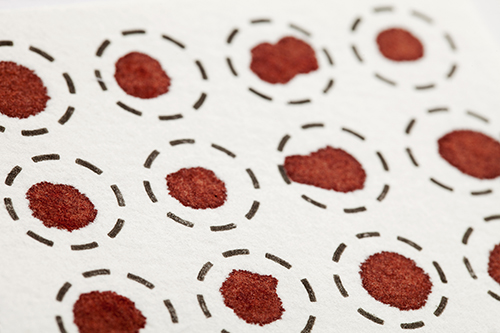June 8, 2020
Faul and colleagues discuss the effects of less than optimal collection, shipping time, heat, and humidity on dried blood spot analyses
 SRC research Jessica Faul and collaborators recently published an analysis showing how factors related to collection, storage, transport time, and environmental conditions affect the quality and accuracy of analyses of dried blood spot samples. The group published their findings in the American Journal of Human Biology – The associated journal of the American Biology Association.
SRC research Jessica Faul and collaborators recently published an analysis showing how factors related to collection, storage, transport time, and environmental conditions affect the quality and accuracy of analyses of dried blood spot samples. The group published their findings in the American Journal of Human Biology – The associated journal of the American Biology Association.
Dried blood spots are a popular method used in large studies to collect biomarker information. Blood spots are an alternative to traditional and more invasive venous blood collection. Respondents are more likely to participate and the dried blood spots themselves have minimal requirements for transportation and storage, and reduced biohazard risks. Despite many advantages of using dried blood spots in data collection, issues that arise in the pre-analytic phase may have substantial influences in the validity of dried blood spot assays compared to the venous blood draw. These influences may include lower analyte yield, stability of the sample, and the promotion of bacterial growth, which in turn may degrades blood samples. This study aims to identify factors related to collection, storage, transport, and environmental conditions that affect the quality of dried blood spot samples and to promote protocols that produce accurate values.
Faul and colleagues assessed differences in total cholesterol, high-density lipoprotein (HDL) cholesterol, glycosylated hemoglobin A1c (HbA1c), glucose, C-reactive protein (CRP), and cystatin C between dried blood spot and venous blood sample. The investigators merged their collection data on the blood spots with temperature and humidity data from the National Climatic Data Center Global Historical Climate Network Daily by zip code. Environmental and blood spot properties investigated include: quality of the dried blood spot card (multiple drops, smeared drops, overlapping spots, incorrectly placed desiccant), quality of individual spots (overlapping/smeared spot, small spot), days before freezing (3, 4-5, 6-7, 8+ days), high humidity, high temperature, with and without adjustment for venous blood sample.
In general, cystatin C, HbA1c, and CRP were generally resilient to many of the environmental and blood spot property measures. Total cholesterol measures were sensitive to smeared blood drops, small spots, high humidity, high temperature and the number of days before freezing. Days before freezing, high humidity, and high temperature strongly influenced the HDL measures downward. Across the five blood measures, having a small blood spot was associated with a lower blood measure.
The authors conclude that the effect of shipping, collection, and environmental factors vary by analyte with cholesterol measures being sensitive to multiple influences. In general, when an analyte is affected, the measurement is reduced by adverse conditions. In addition, the size of the blood spot has an effect on multiple analytes and care should be taken to avoid small spots. If this cannot be avoided, small sample spots should be noted and coded so that adjustment can be made in future analyses.
This important investigation has a broad impact on studies wishing to add biomarker data to their data collection protocols. The study emphasizes the importance of documenting information on the quality of dried blood spots as well as shipping time and conditions. Like much of the sampling and survey biases we explore in social science, biological data is also prone to collection and environmental influences. This intersection of biological and social science methodology is an important nexus where we can all learn from each other's methods to better investigate population health.
Eileen M. Crimmins, Yuan S. Zhang, Jung Ki Kim, Stephen Frochen, Hyewon Kang, Hyunju Shim, Jennifer Ailshire, Alan Potter, Jake Cofferen, and Jessica Faul (2020). Dried blood spots: Effects of less than optimal collection, shipping time, heat, and humidity. American Journal of Human Biology.